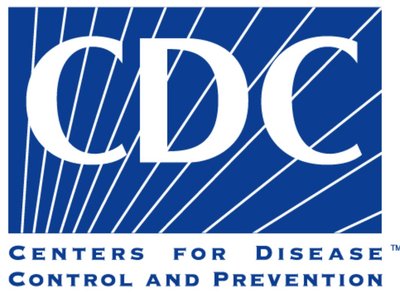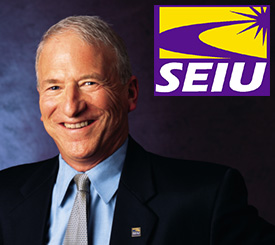LUMBAR PUNCTURE SAFETY
| United States Patent Zeltzer, et al. |
10,278,725 May 7, 2019 |
Lumbar puncture detection device
Abstract
A device for drawing spinal fluid from a body part or injecting medication into the body part is disclosed. The device may include one or more measurement features (markings) that indicate the subcutaneous depth of the device as well as confirm placement and orientation of the end of the device in the body part. The device may include a trocar and a cannula having a central passage adapted to receive said trocar. One or more windows may be provided in or on the cannula. Means for venting air from the cannula central passage and/or transparent/translucent material may be disposed in said windows.Inventors: Zeltzer; Paul M. (Encino, CA), Fischel; Lloyd (Haiku, HI)
Assignee: Zeltzer; Paul M. (Encino, CA)
Family ID: 42005542
Appl. No.: 12/560,140
Filed: September 15, 2009
Prior Publication Data
| Document Identifier US 20100160865 A1 |
Publication Date Jun 24, 2010 |
FEATURED ARTICLES
 The U.S. Centers for Disease Control and Prevention (CDC) convened a National Sharps Injury Prevention Meeting on September 12, 2005, in Atlanta, Georgia. The purpose of this meeting was to review sharps injury prevention efforts (particularly since the passage of the Needlestick Safety and Prevention Act in 2001); identify gaps in prevention efforts; and assist CDC in creating a national action plan for eliminating sharps injuries in the United States.
The U.S. Centers for Disease Control and Prevention (CDC) convened a National Sharps Injury Prevention Meeting on September 12, 2005, in Atlanta, Georgia. The purpose of this meeting was to review sharps injury prevention efforts (particularly since the passage of the Needlestick Safety and Prevention Act in 2001); identify gaps in prevention efforts; and assist CDC in creating a national action plan for eliminating sharps injuries in the United States.

By NEEDLESTICK SAFETY STAFF
“I don’t want you to show this product to my nurses…’cause they’ll want it, and they can’t have it.”
—Hospital Administrator in Puncture
Hollywood’s portrayal of the corporate underworld—where the thirst for profits all too often outweighs the welfare of the innocent—has finally broached medicine’s dirty little secret: the design of medical needles presents a very real hazard to your health.
According to the film Puncture, which is based on a true story, Big Med is led by a few giant corporations that control the lucrative manufacture and marketing of needles in America and around the world, and the leaders of these powerful monopolies will stop at nothing to keep the profits rolling in regardless of who is harmed in the process.
Puncture stars Chris Evans of Captain America fame as an attorney representing a nurse named Vicky (played by Vinessa Shaw) who died from HIV contracted through a needlestick accident. In fact, nurses and other healthcare workers are forced to use flawed medical devices every day, and thousands get stuck with contaminated needles each week due, not to poor practices on their part, but because the needles they are forced to use are inherently dangerous.
The film follows Evans as he investigates the death of the nurse and the system that contributed to her accident. The film based on a true story exposes a world in which giant companies freely manipulate the authorities that are supposed to be protecting the public. The story exposes the problem as so severe—and the system so controlled—that the safest phlebotomy and injection needles are effectively kept off the market by group purchasing organizations (GPO’s) and a few manufacturers that provide America with nearly all of the billion-plus needles used each year.
In the real-life story on which Puncture is based, Becton Dickinson and Company (BD) is the giant corporation that produces the needles. While the basic syringe and hypodermic needle design has been a fixture in medicine for a century, they are unsafe because they are unreliable, something the manufacturers do not discuss. Blood collection requires an experienced hand because sterile procedures must be maintained while the blood draw is completed and in a timely manner to avoid coagulation when the blood comes in contact with air. In an effort to make the process easier—thus requiring less experience on the part of the operator—BD invented the vacuum-based blood-collection system in the 1970’s. BD’s Vacutainer® System became an overnight success, and Wall Street poured money into a host of vertically integrated blood collection and testing-related businesses to handle the growing demands of a large baby-boomer generation.
Advances in healthcare prompted even more demand for blood tests, and those covered by healthcare insurance grew at an unprecedented rate, and huge profits have been made. Big Med was born of a profitable amalgamation of manufacturers, GPO’s, banking concerns, and insurance companies as Americans marched into laboratories and hospitals en masse. There are few medical devices that are deployed so ubiquitously, carry such weight in modern medical practice, and due to perceived value can be produced for pennies but sold for quarters and dollars.
Insiders shy away from discussing the pride, pomp, and circumstance carried-on by the executives running the few hugely successful medical device businesses in the two decades prior to the turn of this century. Certainly, those companies lucky enough to be a part of Big Med employed what some politicians refer to as “the engine of our American way of life” to gain access to the capital that fueled expansion, growth, and large incomes for the growing teams of executives, lawyers, inventors, and advertising agencies involved. BD led the pack using its highly lucrative BD Vacutainer® System as a sharp battering ram bringing the company to expand a wide arena of medical care products.
For two decades it grew to be virtually the only supplier of blood collection needles worldwide. Japan was the only exception to this exclusivity, and the Japanese connection to BD’s success is a fascinating story of international intrigue molded by the cultures of east and west. BD’s success has been staggering, and success like this often arises from and results in some ugly truths. Puncture’s depiction points to corporate behavior so egregious that BD has garnered the right to be called “The Enron of Medicine”.
To maintain the status quo of unimaginably strong earnings, medicine’s market leaders make it difficult, if not impossible, for new devices to enter the U.S. market. The task is not simple, and can best be understood by reading the contents of an unfair competition and market manipulation lawsuit brought against BD by a relatively small needle company, Retractable Technologies Inc. (RTI). RTI sued BD several years ago, and the giant settled on the eve of trial for $150 million cash. Clearly, if RTI did not have the evidence today, it would be folly to again go after the same defendant for matters preciously settled in good faith. RTI’s stellar law firm would have turned down the case.
The background of the lawsuit(s) centers around a small mechanism RTI built into the vacuum based needle or injection syringe that retracts after injection or blood collection, so the needle cannot cause a needlestick accident resulting in contamination. Shaw’s efforts to get his safety needle into to hospitals met with heavy resistance, even though Congress had passed the Needlestick Safety and Prevention Act in 2000 requiring the safest needles available to be used in the U.S. After years of stonewalling by the group purchasing organizations that buy needles in bulk for hospitals, RTI alleges and charges that BD broke civil and criminal laws as it led efforts that kept RTI’s offerings from entering the marketplace. Before the settlement of the first lawsuit, the lawyer Michael Weiss (played by Evans) representing RTI unexpectedly died. Puncture was co-written by Paul Danziger, a partner in the deceased lawyer’s law firm.
Court trials waged by healthcare workers hurt by BD needles generally do not make it to trial. And, therefore, many of the technologies that cause much suffering to nurses and laboratory workers have not been fully exposed to the public. The new RTI challenge to BD is documented in a 122-page complaint that reads like a grand jury indictment. All indications are that Thomas Shaw will not settle, and people familiar with the inventor-turned-businessman say he is looking for justice.
For the many thousands who cannot afford legal help, Puncture is a sad reminder that there are few in the male-dominated medical profession who actively support safety for those who handle much of the daily burdens of modern medical care. Indeed, the film showcases how the needles provided to nurses and other healthcare professionals are not just less than optimal; they are downright unsafe. Factually, hospitals and GPO’s are aware of the technological issues, but together with the manufactures they continue to insure the dangerous devices are in use in America today.
In 1998, the San Francisco Chronicle first reported on the problem of unsafe needles in an award-winning journalistic investigative series, “Epidemic Ravages Caregivers”. This spurned Congress to become concerned that powerful medical device companies were providing defective products, so Senator Ted Kennedy sponsored legislation called the Needlestick Safety and Prevention Act 2000. During hearings, Congress heard that all patients, all of us can be harmed by dangerous medical needles, be they phlebotomy, injection syringe or IV catheter devices. As a result the Act was unanimously passed by both Houses and signed into law by President Clinton.
Unfortunately, today—ten years after the passage of this historic legislation—the problem of needlestick accidents stemming from unreliable needles is still at epidemic proportions due to failures on the part of the agencies tasked with its enforcement. It is estimated 1-3 million accidents occur annually in the U.S. alone. Dozens get HIV each year, and many thousands have contracted hepatitis and a score of other life-threatening diseases through the use of these tools.
The Dept. of Labor’s Occupational Safety and Health Administration (OSHA) regulates industrial tools—a category that includes medical needles. OSHA is responsible for enforcing the Act and keeping it current in regards to new technologies that were expected but had not yet been invented at the time the historic legislation was drafted. The tragic story portrayed in Puncture provides insight into the nefarious relationship between giant medical manufacturing firms and those who run OSHA, the Centers for Disease Control and Prevention (CDC), and other agencies whose job it is to protect the American people.
Consider how unsafe tools might be handled in a different industry. For example, if a few dozen automobiles experience an unanticipated part failure, hundreds of thousands of cars might be recalled as a result due to the potential for further death or injury. The time has come for this standard to be applied to medical needles.
We thank the producers of Puncture for stepping up to the plate and getting this issue aired at a time when many persons are attempting to fix an unhealthy, burgeoning healthcare system.
Future installments on this subject will explore dangers in the vacuum tube-based needles system that is used on virtually all routine blood collection procedure; the impact on those who use these devices; and, the OSHA regulations that allow the least safe devices to continue to be used. We will also look at the billions of dollars in hidden healthcare costs stemming from accidents using these dangerous needles, and reliable, inexpensive solutions to the dangerous blood collection and injection needle designs.

